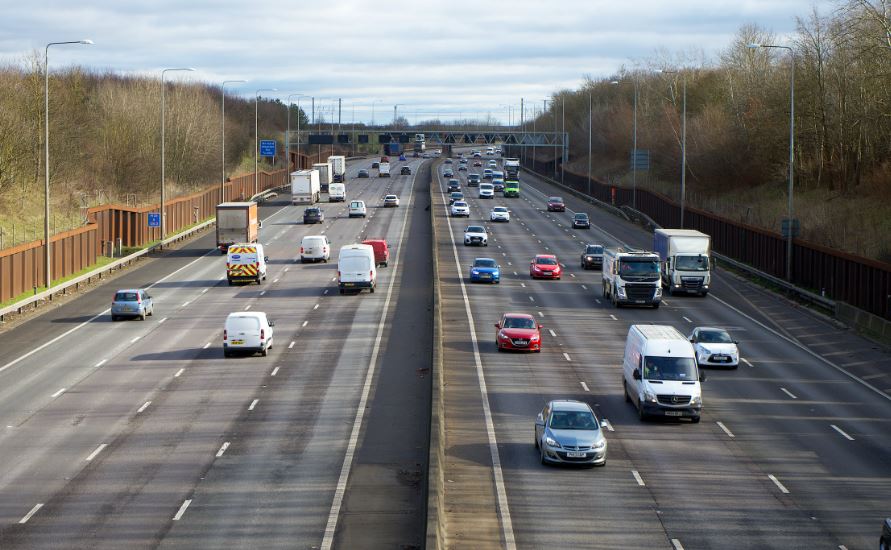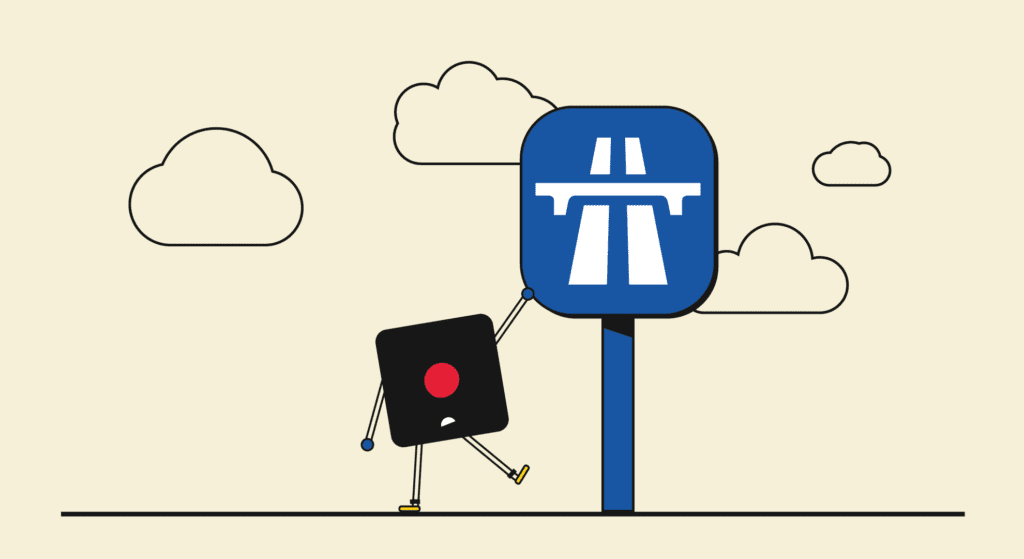The law changed in June 2018 meaning that learners are now permitted to have motorway driving lessons.
This blog answers all your questions about motorway driving lessons, from who can accompany a learner to the differences between motorways and dual carriageways and the significance of amber reflective studs on a motorway.
Who can accompany a learner on the motorway?
Learners must be accompanied by an approved driving instructor (ADI) and the car must be fitted with dual controls. A trainee driving instructor is not allowed to take learner drivers on the motorway. Check out our guide for tips on finding the right driving instructor for you.
Are motorway driving lessons compulsory?
Motorway lessons are voluntary and the driving instructor will decide when, and if, a learner is competent enough to tackle the environment.
Can learner motorcyclists have motorway lessons?
The change in law only applied to learner car drivers. Learner motorcyclists are still prohibited from the motorway network.
What is the difference between a motorway and a dual carriageway?
Motorways and dual carriageways are similar but there are distinct differences.
Both roads have multiple lanes and are separated by a central reservation, but the motorway also has a hard shoulder or emergency areas to stop on smart motorways.
Slow moving vehicles, such as tractors, are not allowed on motorways, nor are cyclists. Horseboxes, cars or vans towing trailers and certain goods vehicles are restricted to certain lanes.
This is because traffic tends to flow faster on a motorway than on a dual carriageway, although the speed limit is the same for both – 70mph.
You can distinguish motorways as the road name will include an M, such as the M1, and the signs are blue. Signs on dual carriageways are green.
Both road categories have a 70mph speed limit but this can be reduced depending on levels of traffic, hazards such as spilled loads, or accidents and weather conditions. We have compiled some handy advice on driving safely in heavy rain.
Motorways are joined or exited on a slip road while dual carriageways have roundabouts and traffic lights.
How should you join a motorway from a slip road?
You should use the slip road to accelerate until your speed matches that of the traffic flow on the motorway, but do not exceed the speed limit. Following this, check there’s a safe gap for you to merge into. Then it’s ‘Mirror – Signal – Manoeuvre’ and you should join the motorway.
When should you use the left-hand lane of a motorway?
You should always drive in the left-hand lane when the road ahead is clear. If you are overtaking a number of slow moving vehicles, you should return to the left-hand lane as soon as you are safely past. You will need to stay in the left-hand lane as you approach a slip road to exit the motorway.
What is the significance of the motorway reflective stud colours?
- Motorway lanes and dual carriageways are marked out by studs in the road. They come in five different colours:Amber studs mark the central reservation of a dual carriageway or motorway
- Green studs mark the edge of the main carriageway at lay-bys and slip roads
- Yellow studs indicate temporary adjustments to road layouts where roadworks are taking place
- White studs are placed in between the lanes on a motorway to help keep you in lane
- Green and yellow fluorescent studs indicate temporary adjustments to road layouts where roadworks are taking place
- Red studs are found on the left-hand side of the motorway, in between the lane and the hard shoulder
Why should learner drivers have lessons on the motorway?
Many argue that offering driver training lessons on motorways is common sense – that it is the best way to prepare learner drivers for driving on them. They say it will help reduce accidents.
- When passing the new law, the government said it was making the changes so learner drivers could:
- Get broader driving experience before taking their driving test
- Get training on how to join and leave the motorway, overtake, and use and change lanes correctly
- Practise driving at higher speeds
- Put their theoretical knowledge into practice

Can learners drive on the entire UK motorway network?
At the moment, learners can only drive on motorways in England, Scotland and Wales. In Northern Ireland, learners are not allowed on the motorway.
What was the law previously?
Before the law was changed in June 2018, motorists were only allowed to drive on motorways after they’d passed their test.
Is there any post-test motorway training?
Newly-qualified drivers can take a Pass Plus course designed to hone their driving skills and potentially reduce the cost of their insurance. Pass Plus consists of six modules, one of which concerns driving on motorways. Find out more about the Pass Plus scheme and whether taking one is worth it.
New drivers also have the option of taking a motorway lesson with an instructor once they have passed their practical driving test. Many driving instructors will provide a stand-alone motorway lesson.
Are there any tips for newly qualified drivers on how to drive safely on the motorway?
While motorways share some characteristics with dual carriageway roads, they can present more challenging situations.
Challenges and differences
- Number of lanes
- Slip road configurations
- Distance between junctions
- Overtaking
- Speed and the speed at which things happen
- Stopping
- Lane discipline
- Signs and markings
The rules
- When joining the motorway, give priority to traffic already on the road
- Drive at a steady cruising speed within the speed limit
- Drive in the left-hand lane when the road ahead is clear
- Return to the left-hand lane once you have overtaken slower-moving vehicles
- Only overtake on the right-hand side
- Do not stop on the hard shoulder except in an emergency
- If you have missed your exit, carry on to the next one
Finding the right learner driver insurance
Get learner driver insurance from Adrian Flux from just 65p a day. Call for a quote on 0800 369 8590 or book a callback at a time that suits you.

